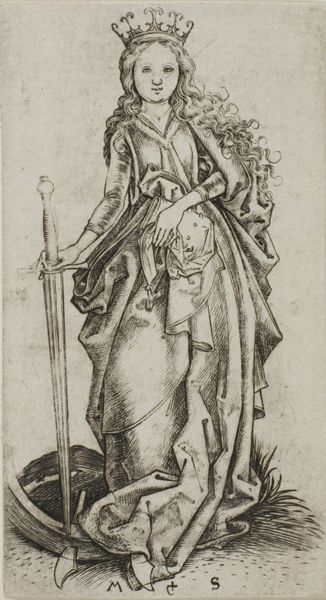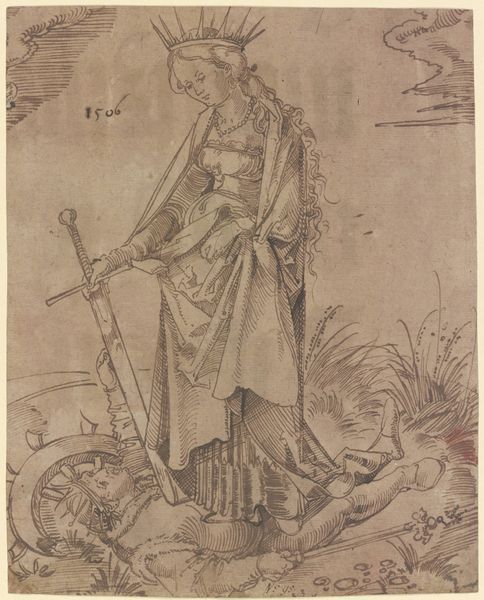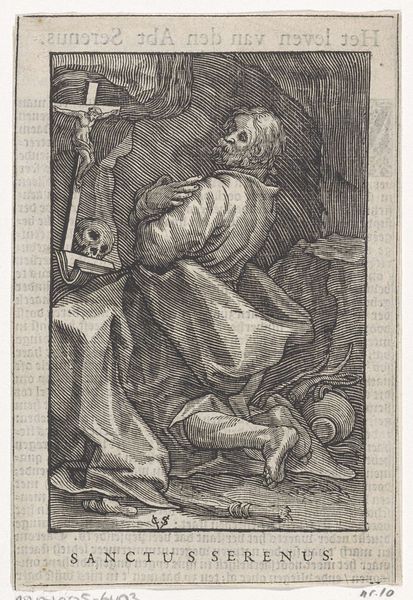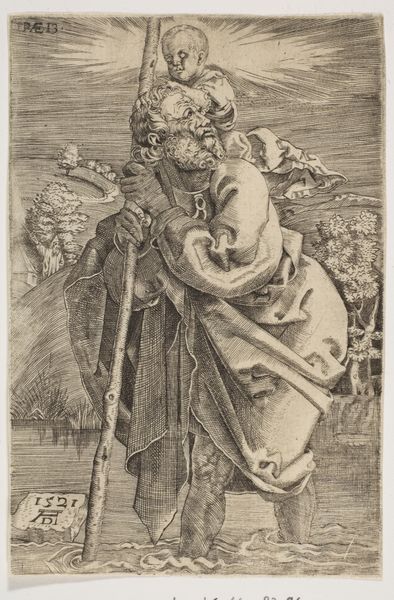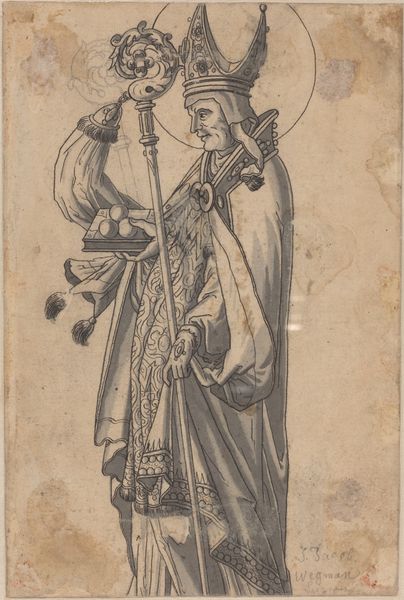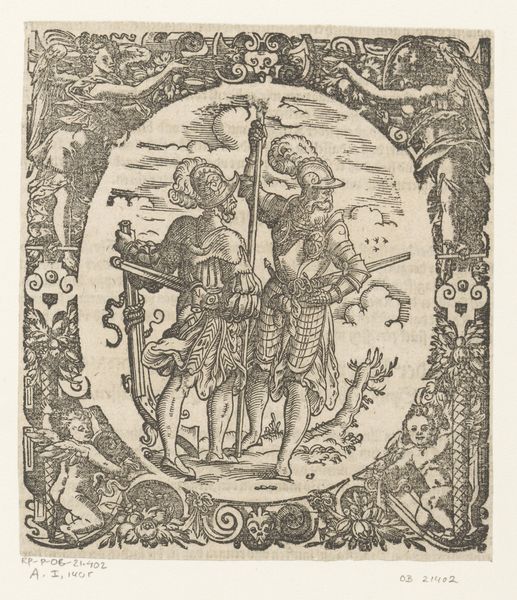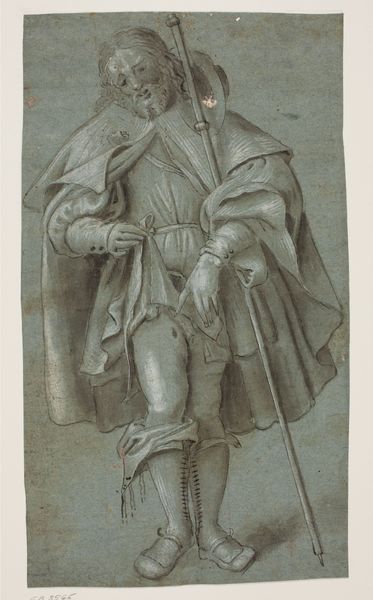
Death on a Canopied Throne (Design for a Title Page) 1660 - 1700
0:00
0:00
drawing, print, ink
#
drawing
#
allegory
#
narrative-art
#
baroque
# print
#
death
#
figuration
#
ink
#
line
#
history-painting
Dimensions: 6 3/16 x 3 11/16 in. (15.7 x 9.4 cm)
Copyright: Public Domain
Editor: This is Godfried Maes's "Death on a Canopied Throne," a drawing in ink from somewhere between 1660 and 1700. It’s pretty stark. Death is presented literally as a crowned skeleton, sitting on a throne littered with skulls, and generally making a statement on the futility of power. What do you see in this piece, especially given the time it was created? Curator: The artwork embodies the "memento mori" tradition, a powerful Baroque trope reminding viewers of their mortality and the transience of worldly power. We see the decay of earthly authority. But it also reflects anxieties of the 17th century. Think about the endless dynastic squabbles and emerging power structures and their human cost, even the devastating plague years that saw such high death rates across gender, race and politics, making no one immune. This creates the feeling of despair captured here. The piece critiques these social hierarchies through its very macabre presentation. Editor: So it’s more than just ‘everyone dies eventually’ then? Curator: Exactly! The artist is speaking to how societal structures of the time are crumbling in the face of unavoidable mortality, challenging viewers to confront the fleeting nature of social status, the monarchy, and earthly authority as a whole. Maes seems to be advocating for something deeper than outward power and material possessions. What do you notice about the composition and the discarded items at the bottom of the throne? Editor: The discarded crown, armor, and books make sense in that context. Curator: Indeed. Considering our moment, what does this artwork say to you about power structures today? Editor: Well, thinking about today, this piece resonates in an era marked by increasing societal and economic disparities and existential anxieties surrounding environmental disaster and our potential end. I see Maes challenging our contemporary obsessions. Curator: I agree, and I hope it will make listeners think about those anxieties and what systems or beliefs support or hinder societal challenges and potential solutions.
Comments
No comments
Be the first to comment and join the conversation on the ultimate creative platform.
